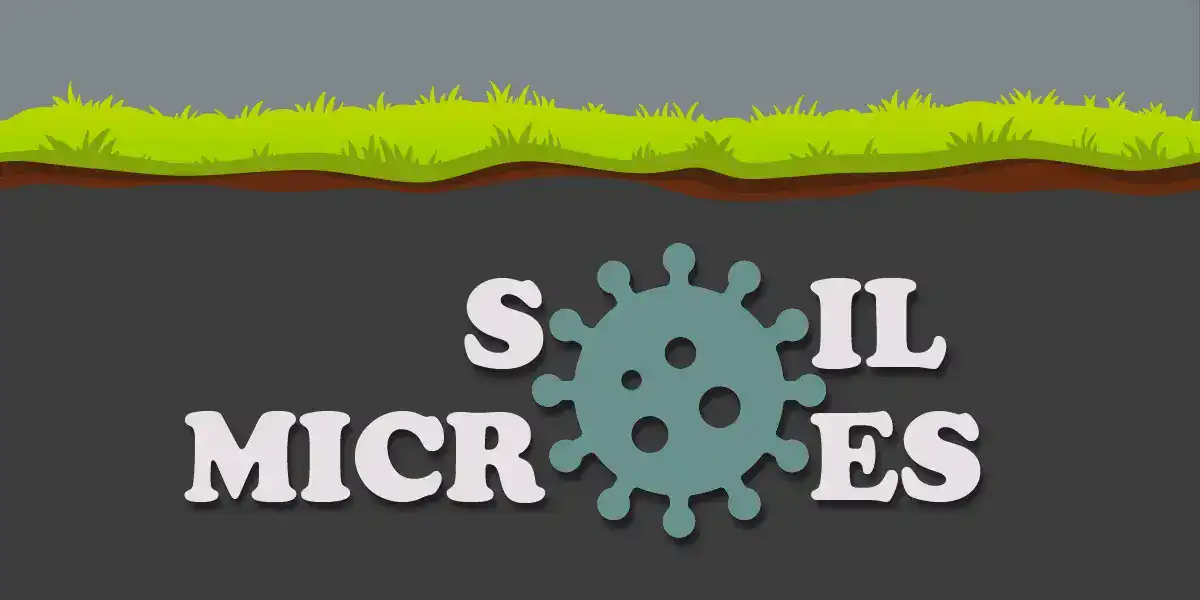You can’t see them.
You don’t pay them.
They work for free.
Are we talking about nocturnal elves? Only if you’re a fairytale cobbler.
In the garden, soil microbes are your champion workers and BFFs. They keep your plants healthy, boost soil fertility, and contribute mightily to a robust ecosystem.
What Are Soil Microbes?
Soil microbes are microscopic organisms that include bacteria, fungi, protozoa, and microscopic algae. Despite their tiny size, they have a massive impact on the health of your garden.
Think of them as the “engine” of your garden soil — breaking down organic matter, converting nutrients into plant-usable forms, and protecting plants from diseases.
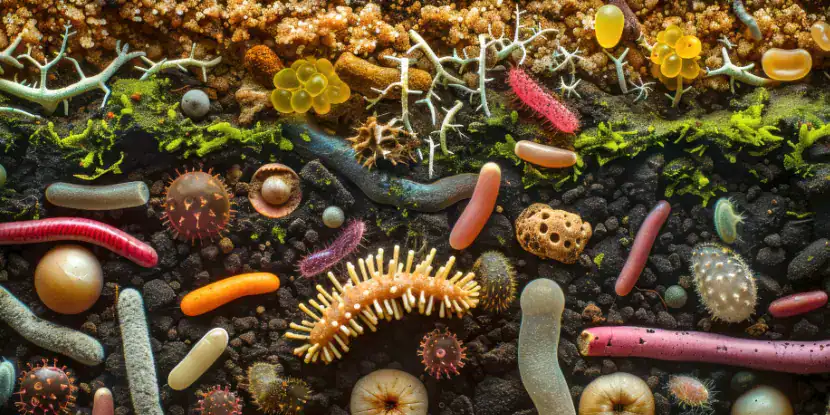
An illustration of soil microbes involved in nutrient cycling while breaking down organic matter.
Types of Soil Microbes
1. Bacteria
- The smallest and most abundant microbes in soil.
- They break down organic matter and release nutrients like nitrogen and phosphorus.
- Examples include Rhizobia, which help legumes like peas and beans fix nitrogen in soil.
2. Fungi
- Larger than bacteria and often visible as white threads in soil.
- They decompose tough organic material like wood and leaves.
- Mycorrhizal fungi form symbiotic partnerships with plant roots, helping plants absorb water and nutrients.
3. Protozoa
- Single-celled organisms that eat bacteria.
- Critical to nutrient cycling by releasing nitrogen into the soil.
4. Actinomycetes
- Bacteria-like organisms that break down complex organic materials like cellulose.
- Responsible for the earthy smell of healthy soil.
5. Nematodes
- Microscopic worms that feed on bacteria, fungi, and other soil organisms.
- Some are harmful, but most are beneficial for plant health.
Together, these organisms form a complex web of interactions that make soil fertile and plants happy.
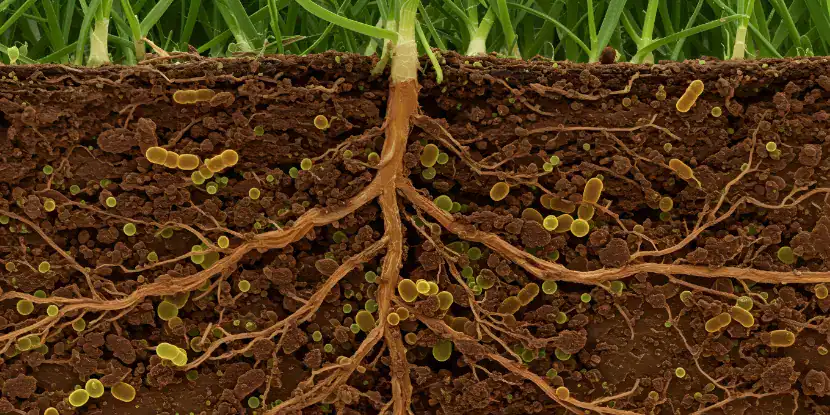
Woo-hoo! Beneath the soil is a microbial fiesta, and your garden is invited.
Why Are Soil Microbes Indispensable?
Without these tiny powerhouses, your soil would lose its life and productivity. Key roles include:
- Nutrient Cycling: Soil microbes decompose organic matter into simpler nutrients that plants can absorb.
- Plant Growth: Certain microbes, like mycorrhizal fungi, extend a plant’s root system, facilitating access to water and essential minerals.
- Disease Prevention: Beneficial microbes protect plants from pathogens by competing for resources or producing natural antibiotics.
- Improved Soil Structure: Microbes secrete sticky substances that bind soil particles, improving aeration and water retention.
- Carbon Storage: Microbes hold carbon in the soil, promoting sustainability and reducing greenhouse gas emissions.
How to Support Healthy Soil Microbes in Your Garden
Follow these practical steps to create a microbe-friendly environment:
1. Add Organic Matter Regularly
- Organic matter is the primary food source for microbes.
- Compost, aged manure, and mulch are excellent additions.
- Spread 1–3 inches of compost on your garden beds annually.
2. Avoid Overusing Chemicals
- Chemical fertilizers, pesticides, and herbicides can harm microbes.
- Opt for organic fertilizers or natural solutions like neem oil or diatomaceous earth.
3. Maintain Proper Soil Moisture
- Microbes thrive in moist (but not soggy) soil.
- Add mulch to reduce evaporation and retain moisture during hot, dry months.
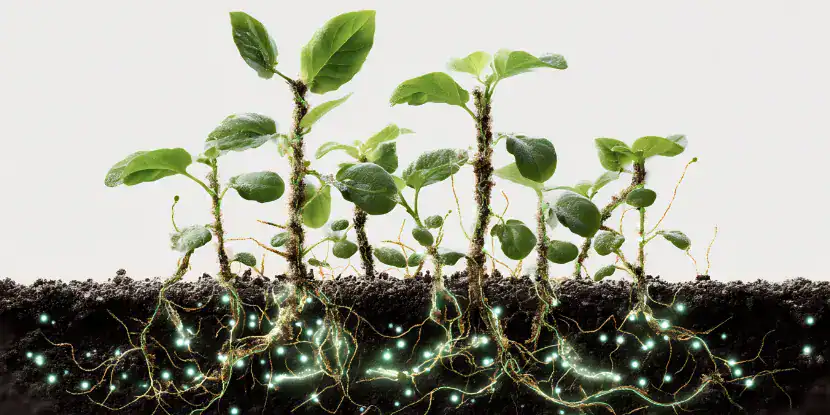
Artistic representation of microbe interactions with plant roots.
4. Rotate Crops & Use Cover Crops
- Crop rotation reduces nutrient depletion.
- Cover crops like clover add organic matter and nitrogen to the soil while protecting microbes.
5. Limit Soil Disturbance
- Tilling breaks up soil structure and disrupts microbial communities.
- Try no-till gardening or keep digging to a minimum.
6. Use Mycorrhizal Fungi Products
- Garden centers sell products containing mycorrhizal spores.
- Add these to your soil to boost plant-microbe partnerships.
7. Create a Compost Tea
- Brew up a “tea” by steeping compost in water.
- Spray it on your plants or soil for a quick dose of beneficial microbes.
8. Test & Amend Your Soil
- Conduct a soil test to check pH and nutrient levels. Microbes prefer a soil pH between 6 and 8.
- Amend your soil with lime if it’s too acidic or sulfur if it’s too alkaline.

A farmer tests the soil for health.
Harmful Soil Microbes
Harmful soil microbes come from a bad neighborhood across the tracks.
These microorganisms, including certain fungi, bacteria, and nematodes, thrive under poor soil conditions or when the microbial balance is disrupted.
1. Fusarium (Fungi)
- Effect: Causes root rot and wilt, leading to stunted growth and yellowing leaves.
- Prevention: Improve drainage, rotate crops, and avoid overwatering.
2. Pythium (Fungi)
- Effect: Responsible for damping-off in seedlings, making them rot at the soil line and collapse.
- Prevention: Use sterilized soil for starting seeds and avoid overly wet conditions.
3. Phytophthora (Fungi-like Organism)
- Effect: Causes root and crown rot and eventual plant death if untreated.
- Prevention: Enhance drainage, avoid waterlogging, and practice crop rotation.
4. Ralstonia solanacearum (Bacteria)
- Effect: Leads to bacterial wilt in crops like tomatoes and potatoes, characterized by wilting and plant death.
- Prevention: Use resistant crop varieties and limit water movement from infected areas.
5. Root-Knot Nematodes
- Effect: Create galls on plant roots, reducing water and nutrient uptake, resulting in poor plant performance.
- Prevention: Solarize soil, use nematode-resistant varieties, and rotate crops.
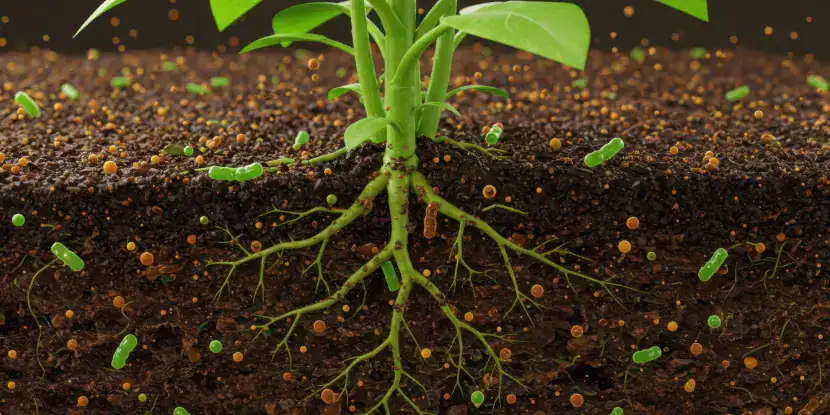
The microscopic world in your garden soil.
How to Avoid Harmful Soil Microbes
- Regularly incorporate organic matter to ensure a healthy population of beneficial microbes that keep harmful ones in check.
- Sterilize tools and containers to prevent the spread of pathogens.
- Practice crop rotation to reduce the buildup of harmful microbes associated with particular plants.
- Avoid overwatering, which can promote pathogen growth.
- Introduce beneficial microbes, like Trichoderma fungi, to outcompete harmful species.
FAQs About Soil Microbes
Q: Why can’t I see soil microbes?
They’re microscopic, but their actions are visible through healthy, thriving plants and dark, rich soil.
Q: Do I really need compost?
Yes! Compost feeds microbes and improves soil structure, giving plants a better growing environment.
Q: How often should I water to keep microbes healthy?
Water deeply but infrequently, allowing the soil to remain moist without becoming waterlogged.
Q: Can I overfeed microbes?
Adding too much organic matter at once can overwhelm microbes. It’s best to feed them gradually.
Q: How do fertilizers affect microbes?
Synthetic fertilizers can upset microbial balances. Organic alternatives are gentler and better for long-term soil health.
Q: Are all soil microbes beneficial?
Most are, but a few harmful microbes exist. Maintaining a balanced microbial community helps suppress the bad ones. It’s like Neighborhood Watch for your garden!
Q: Can microbes thrive in sandy soil?
Yes, but sandy soil may need more organic matter to support them due to its low nutrient and water retention.
Q: Do store-bought microbes really work?
They can, especially mycorrhizal fungi products. Just ensure they suit your plants and soil type.

